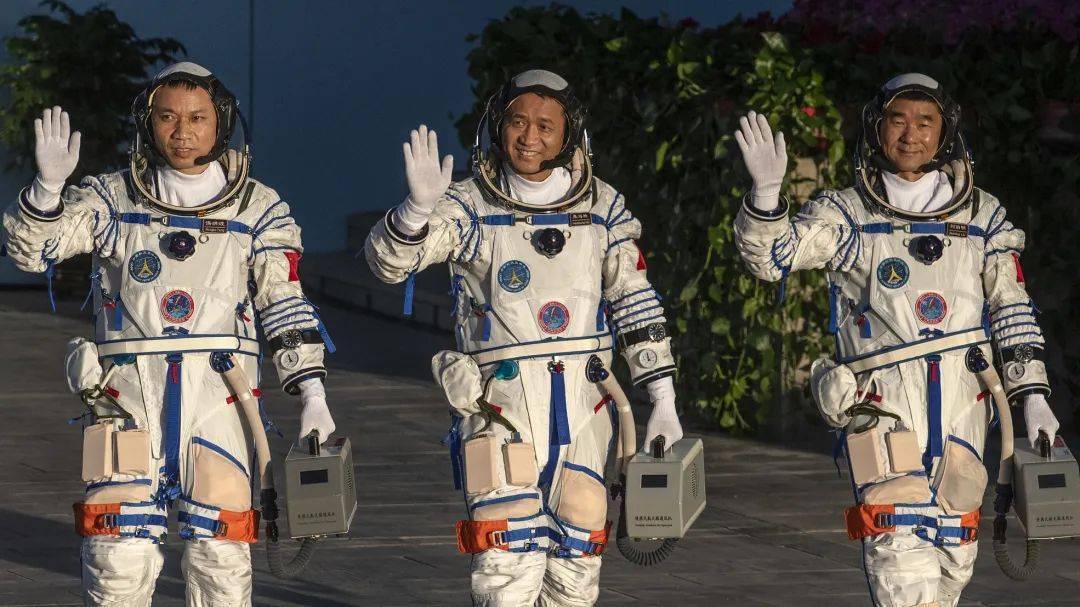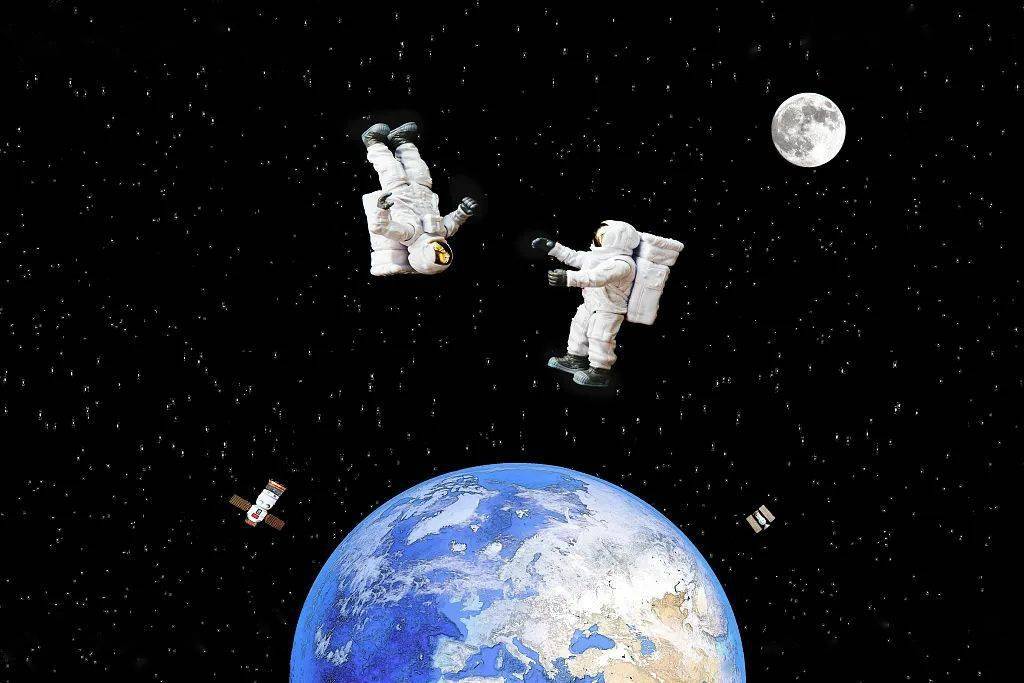The flight crews for Shenzhou-12 to Shenzhou-15 were selected in December 2019. China has picked four teams for different missions. Each team is led by an experienced captain, who will command another two taikonauts.
For Shenzhou-12 mission, three taikonauts, namely Nie Haisheng, Liu Boming and Tang Hongbo, became the first to enter the Chinese space station.
"I think the trio is a great combo," said Huang Weifen, deputy chief designer of the astronaut system of China's manned space program. "We chose Nie as the captain for his two-time space flight experience and Liu Boming for his previous experience in extravehicular activity, while Tang is the backup taikonaut for Shenzhou-11 mission and he excelled in every area."
The selection has been made based on aspects such as experience, age, individual characters, physical performance and mental health. The synergy or compatibility among different members is also a big factor.

载人航天是一项艰巨的事业。因为太空环境十分艰苦恶劣,人在航天过程中要经受巨大的加速度、噪音、振动、失重、宇宙射线等不良因素的影响,而且航天员在这样的环境中还要完成复杂的驾驶、操纵、实验和观测任务,甚至还可能会遇到一些意想不到的情况,需要正确、及时和果断地进行处理。
正因如此,对宇航员的选拔和训练都很严格,要求有强壮的身体,能耐受各种恶劣的环境;有良好的心理素质,以掌握复杂的操作技能和应付意外情况;有献身精神,以适应航天探险活动等。
黄伟芬表示,“候选人必须身心健康——身体素质要好,对航天环境要有很好的耐力和适应性,而且心理素质要好,年龄、身高、体重、教育背景和职业背景都必须满足要求。”
预备航天员选拔涉及基本条件、医学、心理选拔以及综合评价等4个方面,需要满足43个方面的要求。满足预备航天员条件后,还需优中选优,进行飞行乘组选拔。
在这个过程中,航天员们需要经历17项生理功能检查。例如,航天员进入太空后的前三天,在失重环境下,容易出现和地面“晕车”类似反应,这就需要对航天员的“前庭功能”进行测试。
同时,在心理层面,还会采用调查、会谈、观察等形式,以及国际上通用的心理测验方法和评价标准,以选出心理素质优秀的人。
经过20多年的研究和实践,我国已经建立了一套完整的航天员选拔方法和标准,这个标准涵盖了航天驾驶员、航天飞行工程师和载荷专家三种类型。对不同类型的航天员,会采用不同的选拔标准。
只有符合种种标准,经过大浪淘沙,才有可能成为一名航天员。
The qualification criteria includes basic, physical, mental and overall evaluations. "There are about 43 aspects including age, height, education and professional background just in basic evaluation," said Huang.
She said physical evaluation is about clinical and physical functions, such as cardio-pulmonary function and endurance to the space environment. There are 17 physical checks just to test endurance and adaptation to the space environment.
Testing of the vestibular function is also one of the physical checks. Huang explained that astronauts usually experience a unique physical reaction in the orbit during the first three days in space, similar to carsickness or seasickness. Candidates who have weak vestibular function can become very dizzy and even vomit.
"It's incredibly difficult to become an astronaut," Huang said.
After over two decades of practice, China has set up a complete process to select taikonauts who can work as pilot astronauts, spaceflight engineers or payload specialists.
"The pilot astronauts need to meet the strictest requirements, and they are chosen from active aviators," according to Huang. She said engineers and payload specialists have different requirements, less strict but still many.
Huang said only clinical medical requirement for selection has over 120 clauses, each of which has multiple medical requests that a candidate must meet.
"It's a process to select from 'the best of the best,'" said Huang.

经过多年的摸索,黄伟芬和她的团队摸索并完善出八大类、百余个航天员的训练课目,每个课目又有很多训练单元,涉及到医学、生理、心理,还有科学理论和工程技术等诸多方面。因为此任务有舱外活动,她带领航天员在水下进行几个小时舱外作业训练。
黄伟芬介绍,航天员们的训练程度不亚于运动员。例如,每次下水进行训练,航天员都要穿着二百多公斤水槽训练服在水里训练4小时。
此外,航天员为了承受超重、失重、低压等特殊环境因素的严峻考验,超重力耐受训练,或高重力训练,也是必不可少的。
黄伟芬表示:“无论男女航天员都必须通过胸背向八个G的选拔和训练,八个G就相当于自身八倍体重压在胸口。每年做两次,上半年做一次,下半年做一次,从入选接受训练开始一直到退役,必须保持训练不能中断。只要他还是个职业的航天员,他就有责任和使命随时准备去接受任务。”
Huang led the team to develop over a hundred types of training in eight categories in various fields, such as medicine, physics, psychology, science and engineering. She also trained the Shenzhou-12 taikonauts under water to mimic the microgravity environment as there are extravehicular activities for the mission this time.
"They are trained for four hours each time under water, donning spacesuits over 200 kilograms," said Huang. "It's grueling for our taikonauts."
"In the early sessions, Tang said he could not even hold chopsticks after the training," Huang said. Tang has never been to the space before.
The astronauts are exposed to the pull of hypergravity when spaceships ascend and return. During the hypergravity period, the blood moves to the legs, causing possible loss of vision and consciousness. So, the training on tolerance to hypergravity, or high-G training, is also essential.
Huang said all male and female taikonauts have to pass the 8G criterion, which means they should be able to bear eight times the gravity force of their own body weight. "The taikonauts go through it once every half a year."
"As long as they are professional astronauts, it's their duty to keep going through the training, ready for the mission calls, until the moment they retire," Huang said.